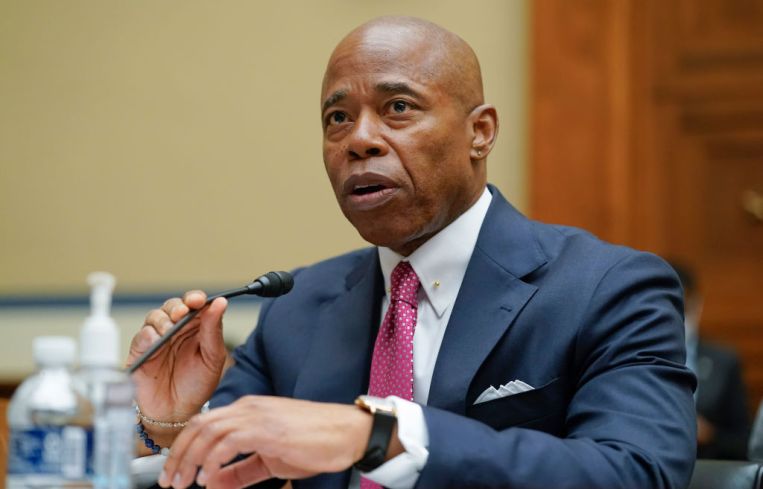Adams Plans to Prevent Destruction of Historic Buildings Through Neglect
By Mark Hallum April 7, 2023 4:13 pm
reprints
A new city plan would aim to prevent the demolition of landmarked buildings, and those that could be designated as such in the future, after owners let them fall into disrepair.
Mayor Eric Adams announced an action plan Friday that would roll out a variety of tools to circumvent issues ranging from owner and contractor neglect of historic properties to poor communication between the New York City Department of Buildings (DOB) and the city’s Landmarks Preservation Commission (LPC).
The ultimate goal would be to prevent instances of “demolition by neglect,” illegal renovations or shoddy work done by contractors that have led to the destruction of the city’s historic buildings, most recently 14 Gay Street in the West Village.
“New York City is home to some of our nation’s richest history, and protecting our most fragile landmark buildings is a crucial way to ensure those stories continue to be told,” Mayor Adams said in a statement. “[The administration worked to] locate the gaps in the preservation process, and create a plan to fix it. This action plan will undoubtedly help save the incredible historic buildings that decorate our city.”
The landmarked 14 Gay Street — built around 1828 and once home to New Yorker writer Ruth McKenney — started to come down earlier this year after contractors deviated from DOB-approved plans to replace a foundation wall in the cellar. The improper work left the foundation walls between 14 Gay and neighboring 16 Gay Street unsupported. That left it “in immediate danger of collapse,” according to the DOB.
Preservationists have also charged demolition by negligence to be the case with the 19th century West-Park Presbyterian Church in the Upper West Side. The congregation is pushing to strip the church of its landmark status so it could sell the property to a developer — who plans to raze it and put apartments in its wake — and denies the accusation of neglect.
To prevent similar cases in the future, the DOB will specifically be sharing data from inspections and its Forensic Engineering Unit with the LPC as well as working with the city’s Fire Department. The LPC also recently hired additional enforcement staff, according to the Adams administration.
The city will also increase the different types of DOB applications that need to be reviewed by the LPC’s consulting engineer, but did not immediately elaborate on which kinds of applications will now be scrutinized.
The DOB’s Construction Safety Engineering Unit will also put excavation work that requires significant demolition of the rear walls under closer review prior to approval by LPC, and the two agencies will conduct joint inspections.
“Time and lack of proper maintenance by owners have a compounding effect on our city’s aging historic buildings,” acting DOB Commissioner Kazimir Vilenchik said in a statement. “These new initiatives spearheaded by LPC and DOB are going to help us proactively identify at-risk landmarked buildings in our city, so we can intervene before structural stability issues worsen and the buildings deteriorate beyond repair.”
The Adams administration will also require all applications for work to be filed under the newer online public portal, DOB NOW: Build. Currently, applications are filed to the more antiquated Buildings Information System.
This will increase transparency and prevent buildings that are under consideration for landmark designation from being destroyed, the administration believes.
Mark Hallum can be reached at mhallum@commercialobserver.com.


